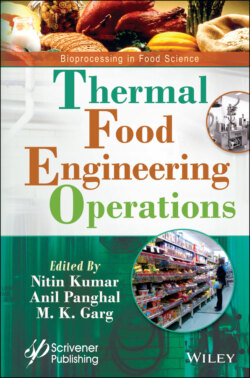Читать книгу Thermal Food Engineering Operations - NITIN KUMAR - Страница 38
2.3 Inactivation Mechanism of Targeted Microorganism
ОглавлениеThe effective application of innovative technology for food preservation depends on the development in the field of inactivation mechanisms. A requisite acquaintance with the physiological behavior of microorganisms in the direction of decontamination factors is indispensable for the advancement of secure food products [20]. It is vital to consider and understand the crucial environmental factor for identifying the resistance in the food product. This will support easy construction of the mathematical model and interpret the kinetics which is done based on the parameters with an effective prediction of the decontamination in a wider range [21]. Therefore, designing a process becomes easier by gathering information on different preservation agents. The efficiency of any method utilized depends upon product type, the process used, and targeted microorganisms [22]. Inactivation mechanisms depend on the technique utilized for the above action and are also influenced by the structure and number of the microbial cell. Environmental stress kills or injures cells of the microorganism but in some cases, it might cause sublethal injury or also might cause total lethal cell death [23].
Destruction of the cell wall is the main factor which leads to the inactivation of microorganism and it also depends upon the cell morphology and shape of the cell. Destruction of the cell wall can be achieved by either chemical process by modifying the wall leading to leakage of the cellular content or by altering the constituents chemically. As already known, heat is the major factor that causes destruction of the membrane as well as protein denaturation but what type of heat, it is tough to state [24].
Application of significant high pressure with heat can lead to disorientation of the cellular structure of the microorganism and also lead to protein denaturation, whereas this is hardly seen in the bacterial spore because of their morphology. As visually seen nevertheless, that hydrostatic pressure treatment can induce for growth of bacterial spores and a combination of swift decompression pressure and elevated temperature leads to the destruction of the spores which re-germinated [25].
Tolerance of microbial stress is affected both by intrinsic and extrinsic factors as resistance during stationary growth and during exponential growth varies because of varied stress sigma factors [26, 27]. With the intention of endurance, micro-organisms incline to produce biofilms, the utmost prevailing microbial defensive structure. Bacteria produce carbohydrate matrices and might consequently condense the efficiency of approaches for inactivation [28].
